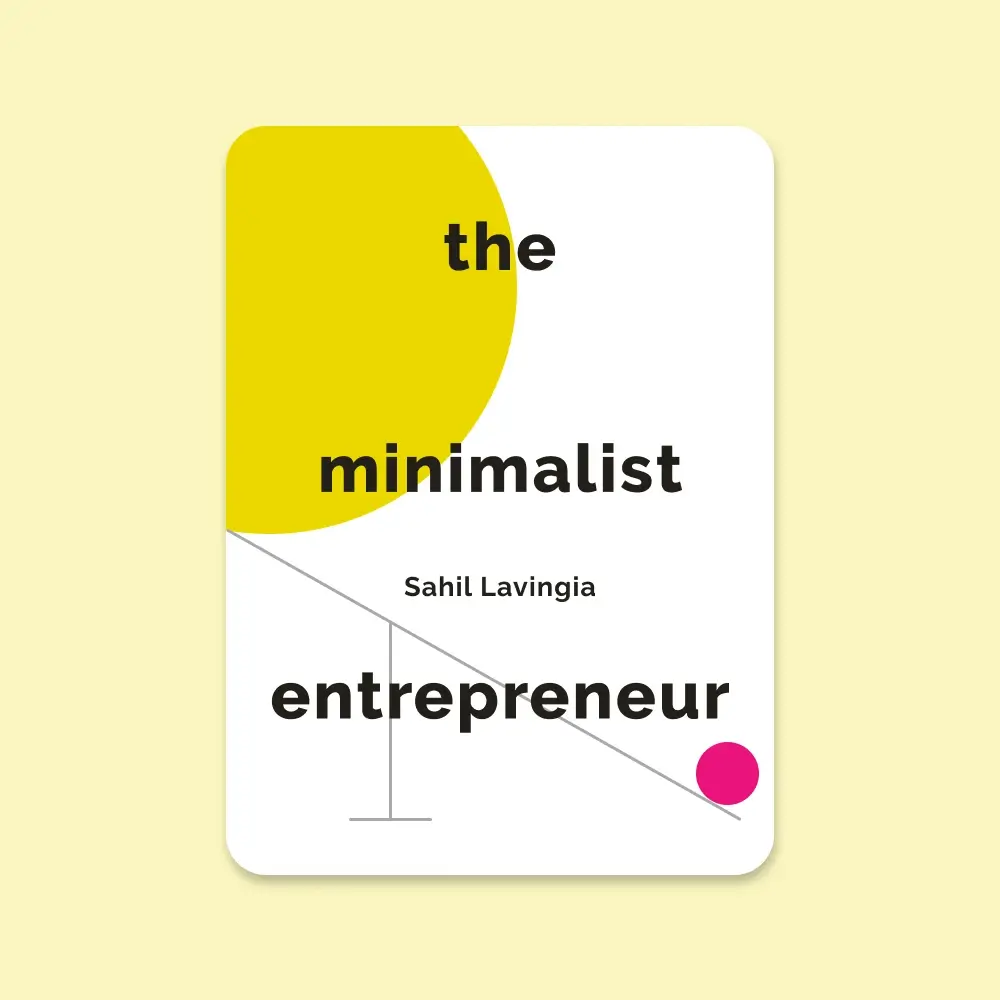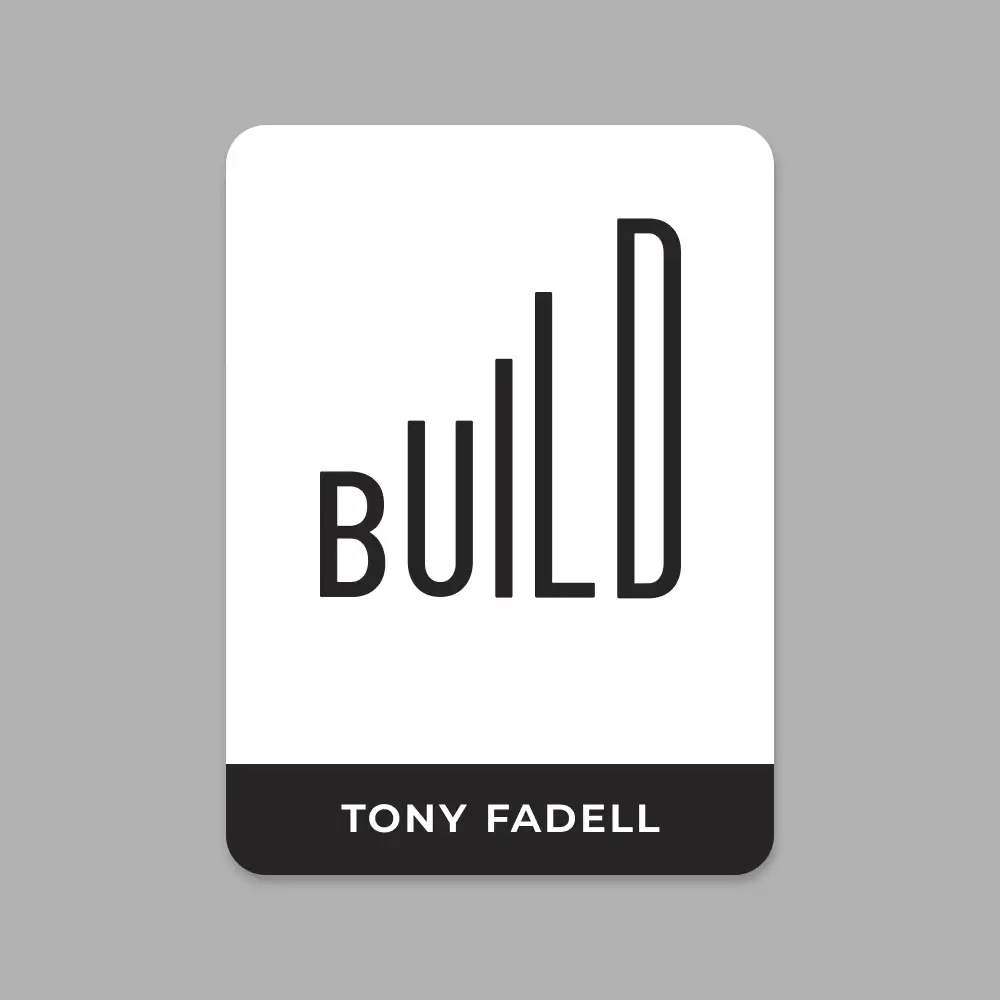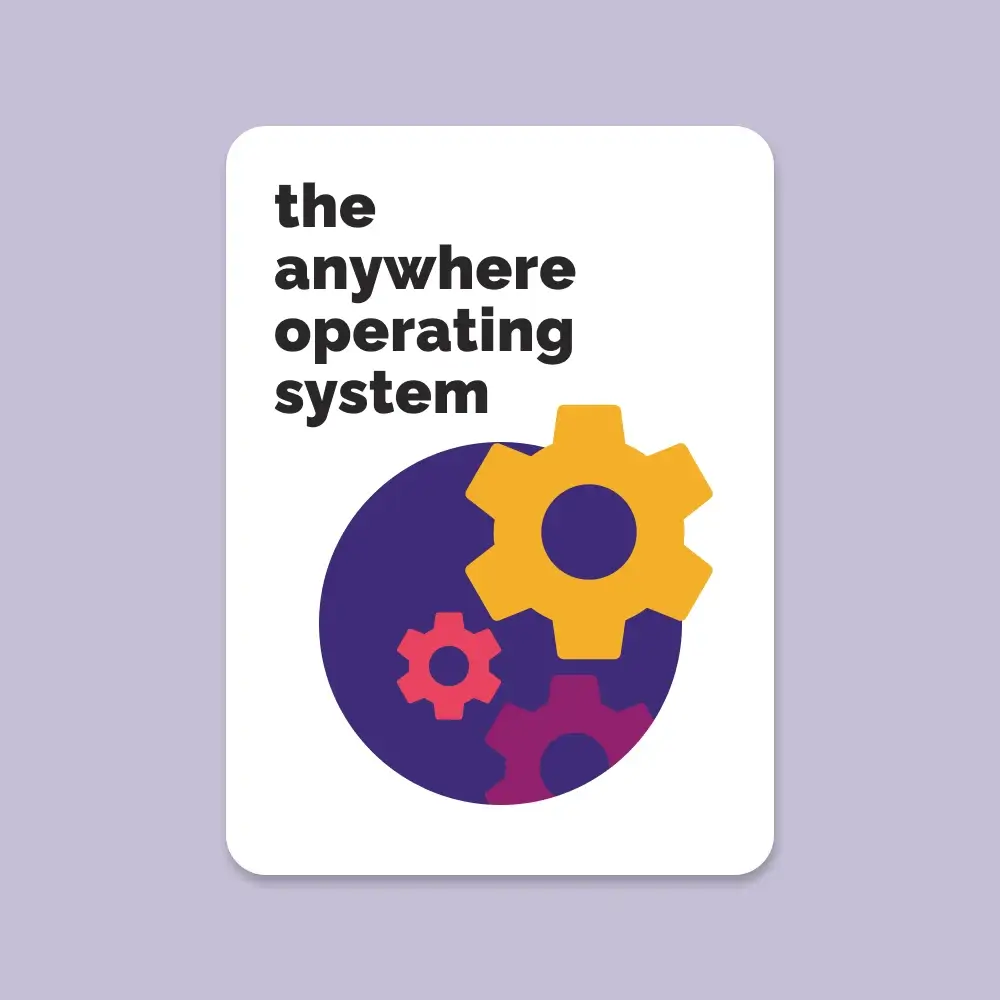
The Minimalist Entrepreneur
-
Building a minimalist business does not mean settling for second best. Instead, it’s about creating sustainable companies that have the flexibility to take risks to serve the greater good, all while empowering others to do the same.
-
Start as soon as you can. Start before you feel ready. Start today.
-
You don’t learn, then start. You start, then learn.
The beginnings of all things are small. —CICERO
- The steps to becoming a minimalist entrepreneur.
- Put profitability first
- Start with community
- Build as little as possible
- Sell to your first hundred customers
- Market by being you
- Grow yourself and your business mindfully
- Build the house you want to live in
-
Minimalist entrepreneurs create businesses that are profitable at all costs.
-
Minimalist entrepreneurs aim to be profitable from day one or soon after, because profit is oxygen for businesses. And they do that by selling a product to customers, not by selling their users to advertisers.
-
Minimalist entrepreneurs build on a foundation of community.
-
When they do build, minimalist entrepreneurs build only what they need to, automating or outsourcing the rest.
-
Minimalist entrepreneurs don’t spend time convincing people—they spend time educating people.
-
Speaking of vulnerability, minimalist entrepreneurs share their stories, from struggle to success.
-
Minimalist entrepreneurs own their businesses, they don’t let their businesses own them.
-
Minimalist entrepreneurs hire other minimalist entrepreneurs.
-
Chase Profitability, Not Unicorns.
-
Building a minimalist business is not a get-rich-quick proposition, but it is a get-rich-slowly one if you embrace profitability, not growth, as the key indicator of your company’s success.
-
Most people don’t start. Most people who start don’t continue. Most people who continue give up. Many winners are just the last ones standing. Don’t give up.
-
Where do you start? Take a good hard look at the people, places, and communities you care about. Where are the pain points? What isn’t working, but might with a little elbow grease?
-
The internet lets you learn from anywhere, network with anyone, and raise money directly from customers.
-
Problems don’t solve themselves. People do.
-
A business is a way to solve problems for people you care about and get paid for it.
- Become a creator first, an entrepreneur second.
Start with Community
It takes a village to raise a child. —AFRICAN PROVERB
-
Community is a fundamental societal unit.
-
Communities are made up of individuals who might be otherwise dissimilar but who have shared interests, values, and abilities.
-
You don’t have to bring your whole self to every community you join, but you do have to bring a slice of yourself.
-
Contribute, Create, and Teach
-
On the internet, they say, 1 percent create, 9 percent contribute, and 90 percent consume.
-
If you contribute, you will have ten times the presence of someone who doesn’t. And it will continue to grow from there.
-
If you go further and create by showing what you’re working on, teaching what you’re learning, and bringing new material to your community, that influence will grow ninetyfold.
-
“Work in Public”“Teach Everything You Know”“Create Every Day”
-
If you’re always learning, you’ll always have something to teach others about their own next best steps.
-
Chances are, if you’ve learned something, there’s probably a good portion of your community that would find value in learning that same thing from you, even if you aren’t the world’s leading authority on the subject.
-
If you’re regularly learning, then you’ll always have regular content to contribute to the community. This can become a nice flywheel over time, as teaching often becomes the best way to drive your own curiosity and inspiration to learn more yourself. And when you learn publicly, your students will have questions that force you to learn even more stuff to teach them.
-
Every community has a unique set of problems that’s calling out for a custom-built solution.
-
Too small, and you won’t be able to build a sustainable business. Too large, and it will cost too much money to get to sustainability in the first place—and you will attract or create competitors along the way, leading to a race to the bottom in product pricing that you may not survive. You should find something right in the middle.
-
If you try to make something for everyone, you will likely end up making something that no one really wants or needs. Once you know the group of people you want to help, you will start to see their problems much more readily.
-
It’s the community that leads you to the problem, which leads you to the product, which leads you to your business.
-
Once you’ve found community-you fit, start contributing with the intention of becoming a pillar in that community.
-
Pick the right problem (it’s probably one you have), and confirm that others have it. Then confirm you have business-you fit too.
-
When in doubt, always go back to the community. They will help you keep going and ultimately succeed.
Build as Little as Possible
-
You do not need a team, money, or a degree to start building.
-
Every big idea was small first. If you don’t start small, if you can’t help people one by one, you will struggle to build a business around your idea. Leave your ego at the door, set aside your concerns about funding and software, and focus on your first customers, using your time and your expertise to solve real problems for real people.
-
Productizing simply means developing a process into something you can sell.
-
Refine a manual valuable process before building a minimum viable product.
-
The faster the feedback loop you have with your customers, the faster you’ll get to a solution they will pay for. The fastest feedback loop will be one you have with yourself.
-
Before you build anything at all, see how little you can get away with charging for it. Even later, build only the things you need to build. Outsource the rest.
Sell to Your First Hundred Customers
-
Between start and success, it can be a slog. It can take years. And it often isn’t nearly as glamorous as you expect. But you will have many small victories, and over time they will build into a sense of satisfaction and pride that comes from not giving up.
-
Start by selling to your family and friends before moving on to your communities and, finally, if at all, to total strangers.
Market by Being You
-
Most people will not be a fit for your business. That’s okay. Your audience will grow much larger than your customer base—but your customer base is a subset, likely the most passionate, of your audience.
-
Every customer will engage, follow, research, consider, and finally buy (and hopefully buy again!).
-
Educate, Inspire, and Entertain
-
The stories about your business will be stories about your struggles, your customers, your learnings, and your journey. They will create more fans. Who will in turn become your customers, who in turn will tell others about your business.
-
A business built primarily through organic growth will be durable from the start, but even more durable over time as the businesses that heavily rely on paid advertising start to struggle.
-
Marketing is not about making headlines, but making fans.
-
Start by educating, then inspiring, then entertaining. Each of these three levels of content is more far-reaching than the last.
-
Paid advertising can work, but it has its cons. If you do decide to spend money, wait as long as you can—you’ll know much more about who you’re trying to reach that way.
Grow Yourself and Your Business Mindfully
Life is like riding a bicycle. To keep your balance you must keep moving. —ALBERT EINSTEIN
-
There are two categories of self-inflicted mistakes, or “unforced errors,” to watch out for. The first set relates to running out of money, and the second set to running out of energy.
- Don’t Spend Money You Don’t Have
- Pay yourself as little as possible, at least to start.
- Hire software, not humans.
- Don’t get an office.
- Outsource everything.
-
Stay Focused on What Your Customers Want
-
If you stay focused on what drives sales and what excites your customers, then you’ll know how to grow; they’ll tell you. And if you pay attention as you go, even as you do unwittingly make unforced errors, it will be your customers (or the lack thereof) who will show you how to get back on track, far before you would have otherwise noticed.
- Overcommunicate with Your Cofounder
- Do not start a relationship with someone unless you really, really trust them.
- Do introduce vesting so that each of you earns your stock over several years.
- Do make sure you are aligned on your values, what you want to build, and how you want to build it.
- Do not ignore the possibility that one of you may leave. Plan for what a successful exit from the business may look like.
- Do have the hard conversations as early as you possibly can. Hard conversations get harder the longer you wait to have them.
-
Seek “profitable confidence”: Infinite runway will maximize your creativity, clarity, and control. This is simple (spend less than you make) but not easy.
-
How to spend less: Do less. Don’t move too fast, don’t move to Silicon Valley, don’t get an office, don’t get too big. Grow as fast as your customers want you to—and are paying you to.
- If you raise money, think about raising it from your community and turning your customers into owners.
Build the House You Want to Live In
You can dream, create, design and build the most wonderful place in the world . . . but it requires people to make the dream a reality. —WALT DISNEY
-
Define Your Values Early and Often
-
You’ve already built one product for customers, now you’re building another: The product is your company, and your customers are your employees.
-
Building a company full of humans is more rewarding than building software, but it is also much harder.
-
Fit is two-way: If it’s not working out for you, it’s probably not working out for them. Have the hard conversations early, as they’ll only get harder the longer you wait.
Where do we go From Here?
-
You’ve Made Money, Now Make Time
-
I believe our goal should be to bring together our passions, our missions, our professions, and our vocations.

